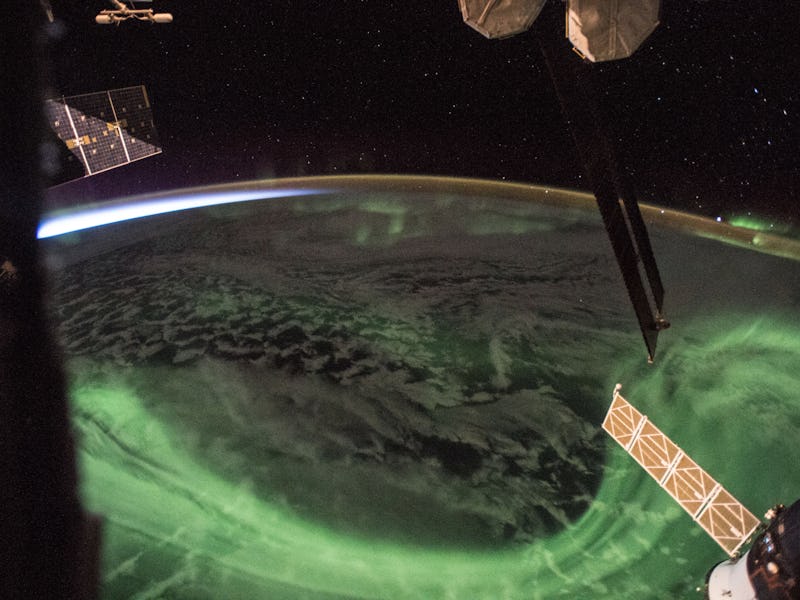The International Space Station is the only place to conduct experiments in a realistic microgravity environment. It’s also conveniently the best place to catch a glimpse of Earth’s most mystifying phenomenon, the northern lights. Sure, dinner with a view is great but you can’t get science with a view like this anywhere else.
NASA astronaut Ricky Arnold tweeted a photo Monday of the emerald bands of an aurora as the sunrise peaked over the horizon. Scientists tracking auroras from the ground spend months trying to capture these breathtaking whisps in the night sky, but the ISS crew get front row seats to this atmospheric light show from their orbital perch.
Join our private Dope Space Pics group on Facebook for more strange wonder.
These jade ribbons might seem like something out of an EDM show but they’re actually created by the Earth’s magnetic field, known as the magnetosphere. The sun occasionally sends blasts of radiation towards our home planet, known as coronal mass ejections. Without the magnetosphere, these solar burps would completely broil us. Thanks to our magnetic barrier instead of cooking us alive these waves of radiation produce a natural music visualizer.
Electrically charged particles from the sun knock charged particles from the magnetosphere into the upper atmosphere, where the energy from both is lost. During this process, these particles interact with gases in the atmosphere and emit light of various colors.
The most common color observed is the pale-green seen in Arnold’s picture and is produced by oxygen molecules located about 60 miles (97 kilometers) above Earth. All-red auroras are some of the rarest and are produced by oxygen at altitudes of 200 miles (322 kilometers).
While Arnold wasn’t able to snap a shot of some crimson polar lights, the astronaut is scheduled to stay on the ISS until August 27. So he still has a chance to catch more insane shots of Earth’s most beautiful performance while he’s up in space conducting groundbreaking experiments.
